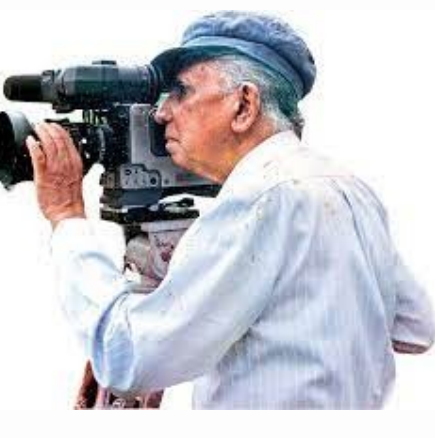PROFILE OF A PETERITE FILM DIRECTOR – LESTER JAMESPERIES
Source : ST PETER’S COLLEGE OBSC Melbourne Summer Newsletter – 2023 / 2023
 Lester James Peries was a Sri Lankan film director, screenwriter, and film producer. Considered as the father of Sri Lankan cinema, Lester worked as a filmmaker from 1949 to 2006 and was involved in over 28 films, including shorts and documentaries. He received critical acclaim for directing Rekava,
Lester James Peries was a Sri Lankan film director, screenwriter, and film producer. Considered as the father of Sri Lankan cinema, Lester worked as a filmmaker from 1949 to 2006 and was involved in over 28 films, including shorts and documentaries. He received critical acclaim for directing Rekava,
Gamperaliya, Nidhanaya, Golu Hadawatha, Kaliyugaya, Awaragira, and Yuganthaya. His movie Wekande Walauwa, starring Ravindra Randeniya and Malini Fonseka, was Sri Lanka’s first ever submission for the Academy Awards and the film Nidhanaya was included among the top 100 films
of the century by Cinémathèque Française. Peries’ films often dealt with Sri Lankan family life in rural settings and conflicted characters. He helped create an authentic expression of Sinhala Cinema.
He attended St Peter’s College in Colombo as a teenager before dropping out to pursue a career in journalism at the age of 17. He found his first work with the Daily News writing for the blue pages which was an arts supplementation. In 1939 he joined The Times of Ceylon. He also reviewed books on Radio Ceylon for a short period. Peries’ first real work with production came when he joined a theatre group called Drama Circle In 1947, Peries travelled to England on his mother’s advice to join his brother Ivan Peries who was there on an art scholarship. Peries’ passion for the cinema was developing and he met another Sri Lankan with similar interests, Hereward Jansz. The two youngsters decided to make a film together despite Hereward having his doubts about competing with established, well-funded clubs. They began with Peries writing the script and directing while Hereward did the filming with their limited camera equipment. Their first effort ‘Soliloquy’ (1949), a short film, won the Mini Cinema Cup for displaying the best technical proficiency. This work was followed by three other experimental films.
In 1952 Peris returned to Ceylon and joined the Government Film Unit. Two major documentaries he helped make were “Heritage of Lanka” and “Nelungama.”At this time, a relative of Peries’ suggested he start a company to produce Sinhala films. Peries left the Government Film Unit in 1955 and created Chitra Lanka Limited . In 1956, Peries made his entry into national cinema with the globally acclaimed Rekava, which was a story based on village life. It was nominated for the Palme d’Or at the 1957
Cannes Film Festival. With this film he revolutionised Ceylonese cinema, giving it a unique identity. It was the first Ceylonese movie to be shot outdoors. Although it was acclaimed internationally it was not a commercial success. Afterward he made many award-winning films such as Gamperaliya in 1964 based on Martin Wickramasinghe’s famous novel which received the Golden Peacock at the International Film Festival of India; “Delowak Athara” in 1966; “Golu Hadawatha” in 1968 based on the novel by Karunasena Jayalath; “Nidhanaya” in 1970 which was chosen as the best film of the first 50 years of Sri Lankan cinema and was included among the top 100 films of the century by the Cinémathèque Française. “Yuganthaya” in 1983; and Wekande Walauwa in 2002 which received the UNESCO Fellini award.
Peries met his wife, Sumitra, who is also a film director, in Paris at the home of a mutual friend and married in 1964 at All Saints Church in Borella. Peries’ brother was artist Ivan Peries. Peries died on 29 April 2018 at the age of 99.







